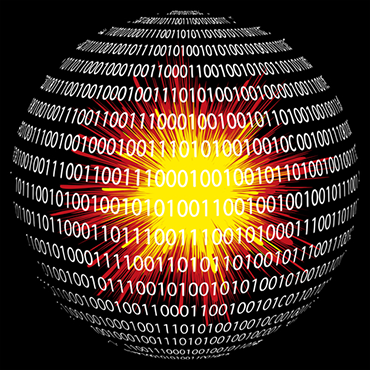IOC just a first step for Cyber Mission Force

The 133 Cyber Mission Force teams called for in DOD's Cyber Strategy have reached initial operating capability, but the U.S. military is still a long way from being able to dominate the cyber domain.

According to U.S. Cyber Command, all 133 Cyber Mission Force teams mandated by the Defense Department's Cyber Strategy have reached initial operating capability. But military leaders say there is still a long way to go to prepare the military to fight in today's cyber and electronic domain.
The Cyber Mission Force is scheduled to reach full operational capability by the end of fiscal 2018 and will grow from 5,000 to 6,200 personnel between now and then.
Army Cyber Command said that of its 41 teams, 30 are already fully capable of carrying out their missions, which range from defending Army networks to conducting offensive operations in the cyber battlespace.
But even though the teams are growing their capabilities and being deployed in places such as Iraq, the military still has substantial cyber gaps that will take years to fill, military leaders said during a panel discussion at the Association of the U.S. Army's Army Cyber Hot Topic event on Nov. 3.
Panelists agreed that the challenge now is educating brigade leaders -- many of whom rose through the ranks in more analog times -- and troops on cyber and electronic warfare considerations and capabilities.
"There's a void in our Army about exposing the rest of the Army to cyber operations," said Kenneth Rector, commandant of the U.S. Army Cyber School at Fort Gordon, Ga.
While discussing the Cyber Support to Corps and Below initiative launched by now-retired Gen. Ray Odierno in 2014, Rector said the Cyber School is focusing on new programs to educate leaders about how cyber is going to affect and enable operations, "and try to work through...how they synchronize, incorporate and consider cyber operations in their planning."
"We're not talking about shutting the lights out in Baghdad," said Brig. Gen. Patricia Frost, director of the Army Deputy Chief of Staff's Cyber Office. "We're saying a brigade commander in their battlespace should have the capability to see themselves, visualize the cyber domain or the electromagnetic spectrum and probably should have some capabilities, I believe, to offensively shape that environment."
This is why Army Cyber Command is conducting exercises to run brigade combat teams through simulated battles that include a contested electronic domain -- something that is the reality in places like Iraq.
Col. Jerry Turner, commander of the 2nd Stryker Brigade Combat Team, led his brigade through one of the training rotations earlier this year. "I didn't even know what a [cyber electromagnetic activities] cell was when we started this," he added.
He said today's tactical operations centers are so complicated and loaded with electronic devices that as a commander he must be trained to understand every capability that exists "because there are so many experts running around in there who are very good at their specific niche but don't necessarily see how that impacts one place to the other."
Turner said it was just as important to know when to use each capability and when to turn things on or off. "That was where a couple of places I made a mistake," he said. "I just left it on too long, and if I had been smart enough by turning it off, I could have opened up a different capability."
He added that "our defensive team was of the quality that we knew when the enemy was attempting to enter the network, and so the natural response from the old scout is 'turn it off.'" But young soldiers who are more familiar with the technology told him there can be benefits to allowing an adversary into parts of your network. "That's pretty powerful," Turner said.
Turner said the most challenging aspect of the exercise was sorting through the volumes of data that come in from all the various systems. Frost said that challenge will only get more difficult for commanders because the ability to collect data is growing exponentially, and that's why the training is so vital.
"As Col. Turner saw, making it tangible, actually giving him capability, giving him soldiers that he can have this discussion with, allowing him to have a cyber planner that he can talk about what he's trying to achieve within his battlespace" are crucial, Frost said.
She added that although it's essential to continue working with brigade commanders, the focus in the next five years should be on training captains and majors.
"The heart of any operation center -- a brigade and battalion -- are those young captains and majors and NCOs," Frost said. "So how and where do we touch them and ensure that they're having that training opportunity?"
In the meantime, she said her office reaches out to units that are about to be deployed to help them prepare as much as possible for cyber and electronic warfare.
Frost and the other panelists said the military should develop more realistic simulators where troops can experience the electronic threats they will face in places like Iraq and learn to operate in a contested electromagnetic spectrum.
"We have to look at the technology of how we can emulate this at home station training to give our soldiers the right environment in which they can figure out how to maneuver," she said.



